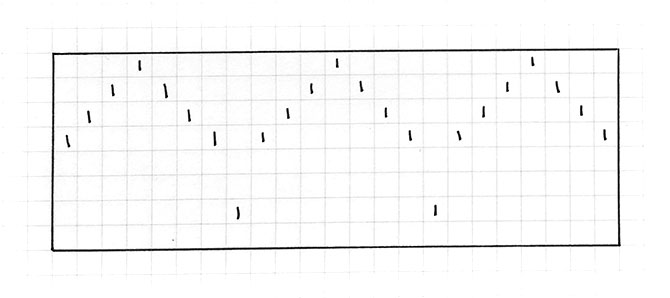In an extra weft structure one weft yarn is used to weave a ground cloth and an additional weft is inserted at intervals to create a decorative pattern on the surface on the cloth.
The ground cloth is usually woven with a simple structure such as a plain or twill weave to enhance the extra weft but other structures can be used.
The sections of the warp that will interact with the extra warp to create the pattern are set up on separate shafts to allow it to be woven independently from the ground cloth where required. The number of shafts needed depends on how complicated the pattern is going to be.
For the example below I have used an eight shaft loom. Plain weave is woven across all 8 shafts for the ground cloth (block A and B woven simultaneously). Shafts 5-8 (block B) are only threaded in specific areas and are woven independently to create diamonds at regular intervals throughout the cloth.
The first end in block A after a block of B must be threaded on shaft two otherwise a plain weave structure will not be possible. The best way to spot these potential errors before weaving is to draw out the draft either by hand or on a weave program.
Below is the weave draft showing how a diamond structure can be achieved using an extra weft structure:
To ensure a stable structure around the extra weft diamond, the ground cloth picks are alternated with the extra weft picks. On the left of the draft the filled circles represent the extra weft and the empty one the weft represent the ground cloth.
This is how the blocks will be spread throughout the woven sample:
Where there are three diamonds placed right next to each other I have placed one warp end separating them, threaded on shaft two. If they were not separated by this thread there would be one weft pick floating over the middle of all three diamonds. Threading plan for the three diamonds next to each other:
The woven samples below are all woven with the same warp set up. Included is the diamond structure explained above.
Extra weft structures can be used in many different ways to create a vast range of cloths.



